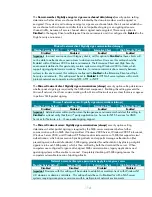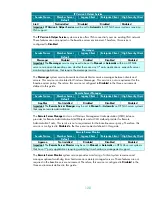
110
2.8.7.4
NTFS
NTFS partitions support ACLs at the file and folder levels. This support is not available with the file
allocation table (FAT), FAT32, or file systems. FAT32 is a version of the FAT file system that has been
updated to permit significantly smaller default cluster sizes and to support hard disks up to two
terabytes in size. FAT32 is included in Windows 95 OSR2, Windows 98, Microsoft Windows Me,
Windows 2000, Windows XP Professional, and Windows Server 2003.
Format all partitions on every server using NTFS. Use the
convert utility
to carefully convert FAT
partitions to NTFS, but keep in mind that the convert utility will set the ACLs for the converted drive to
Everyone: Full Control
.
For Windows 2003 Server-based systems, apply the following security templates locally to configure
the default file system ACLs for workstations, servers, and domain controllers, respectively:
•
%windir%\inf\defltsv.inf
•
%windir%\inf\defltdc.inf
Note:
The default domain controller security settings are applied during the promotion of a server to a
domain controller.
All partitions on servers in all three environments defined in this guide are formatted with NTFS
partitions in order to provide the means for file and directory security management via ACLs.
2.8.7.5
Terminal Services Settings
Setting Name in UI
Legacy Client
Enterprise Client
High Security
Set client connection encryption
level
High High
High
The
Set client connection encryption level
setting determines the level of encryption for Terminal
Services client connections within the network. The
High Level
setting option that uses 128-bit
encryption prevents an attacker from eavesdropping on Terminal Services sessions using a packet
analyzer. Some older versions of the Terminal Services client do not support this high level of
encryption. If the network contains such clients, set the encryption level of the connection to send and
receive data at the highest encryption level supported by the client.
The path to configure this setting in Group Policy is:
Computer Configuration\Administrative Templates\Windows Components\Terminal
Services\ Encryption and Security
















































